 Home
Gallery
Contact
Events & Projects
Projects: 2019 On
Film & TV
Archive & Links
Home
Gallery
Contact
Events & Projects
Projects: 2019 On
Film & TV
Archive & Links
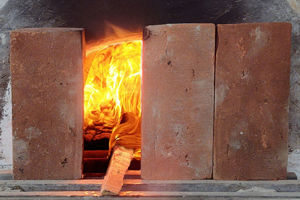
 Home
Gallery
Contact
Events & Projects
Projects: 2019 On
Film & TV
Archive & Links
Home
Gallery
Contact
Events & Projects
Projects: 2019 On
Film & TV
Archive & Links
|

|
2022 Furnace ('Phoenix') and Lehr at Quarley - Vesuvius Firings
Projects: 2019 Onwards
Wood Gathering and Processing
Phoenix Firing Three
Repairs after Firing Three
Phoenix Firing Four
Phoenix Firing Five
The New Shelter Floor
The Electric Kiln
Rebuilding the Lehr
Etna Build and Firings
General Photos
Vesuvius Firepit Build
Vesuvius Superstructure Build
Vesuvius Firings
Repairs after Firing Five
Phoenix Firing Six
|
Vesuvius Firing One
This is reported on this page (and scroll down the page) as part of the building of the superstructure, as it formed an integral part of this process. In preparation for Vesuvius Firing Two, we made some small collars and stoppers for the three gathering holes. We also added three mullite tiles as gathering hole floors. |
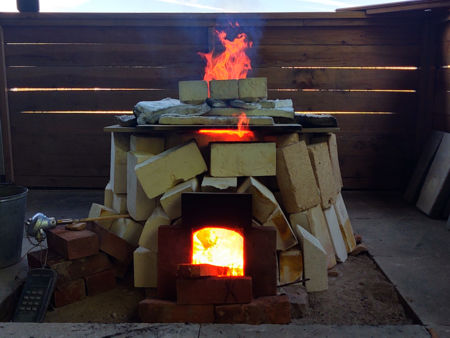
|
|
Vesuvius Firing Two
This firing lasted six and one-half hours, during which time we burned 50kg of Opepe. This time, we were firing the upper wall, the roof, the vulcanettes, and the stoke hole collar. After a slow, steady rise, we reached a top temperature of 1040°C on the upper thermocouple (T1). We wanted to stop at this relatively low temperature as we were firing the stoke hole collar. We kept the stoke hole open to allow a good intake of air to keep an oxidising atmosphere and maintain a good throughput of waste gases to help the removal of any water that was left in the structure. Before the firing, we placed a ceramic fibre blanket gasket between the upper wall and the roof. During the firing, we tried some bead-making, but found that the heat coming from the furnace, as well as the insufficient amount of heat in the vulcanettes, made it difficult to make beads. See 'Vesuvius Firing Three' below. After the firing, a series of repairs and adjustments were needed. The large crack in the outer wall had re-opened, there were cracks and some spalling in the upper wall, and there were several large cracks in the roof. We tackled all of these repairs and painted the inside surfaces of the upper wall and the roof with zircon slip. There are photos of this work in the section on Vesuvius Firing Three (below). |
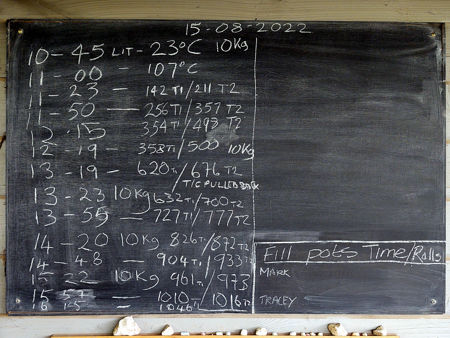
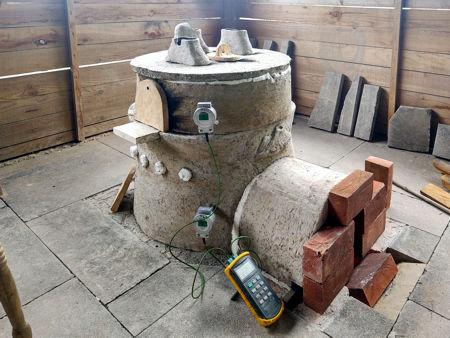
|
|
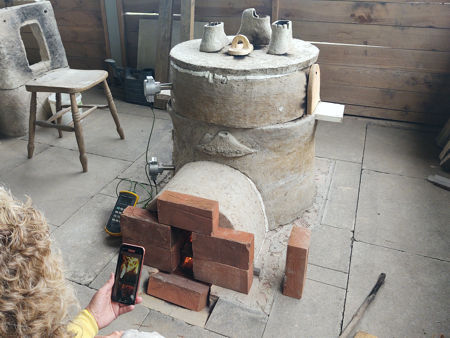
|

|
|
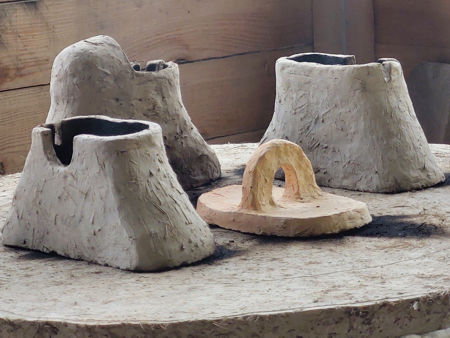
|
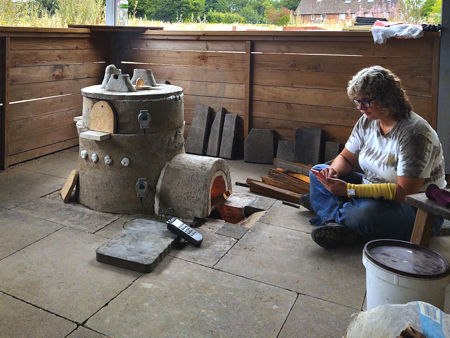
|
|
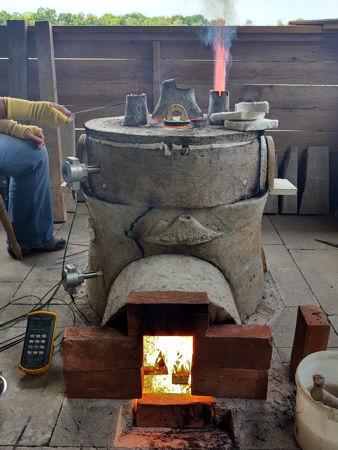
|
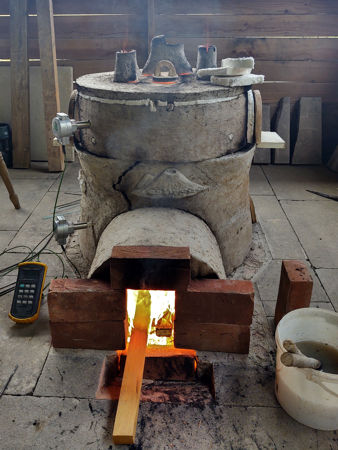
|
|
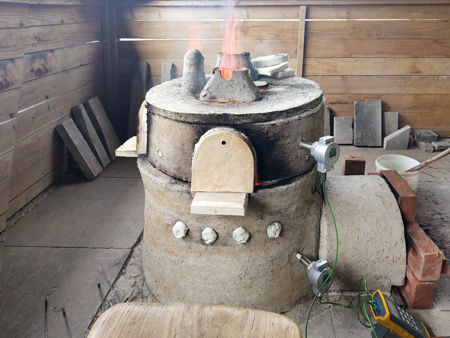
|
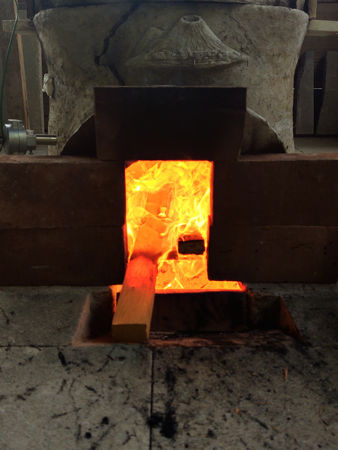
|
|
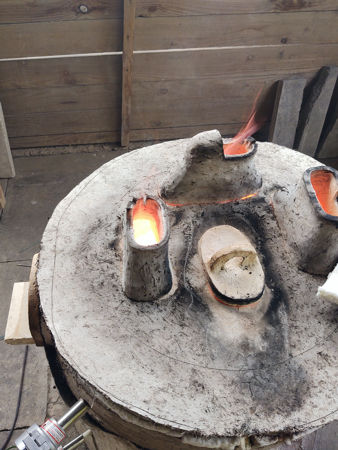
|
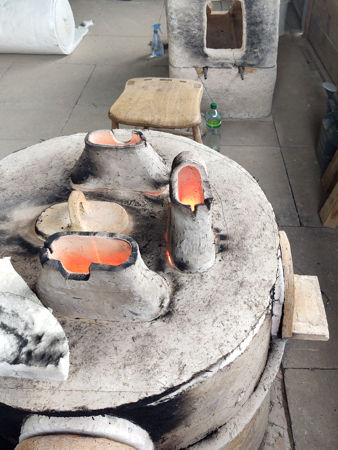
|
|
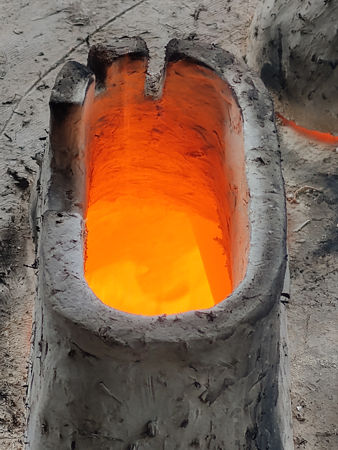
|
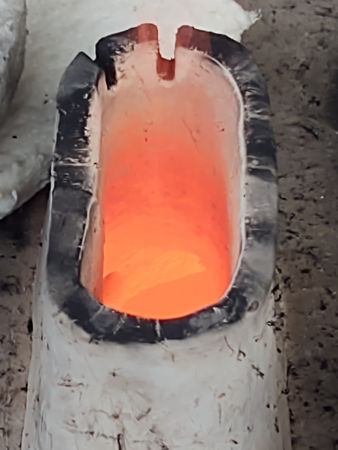
|
|
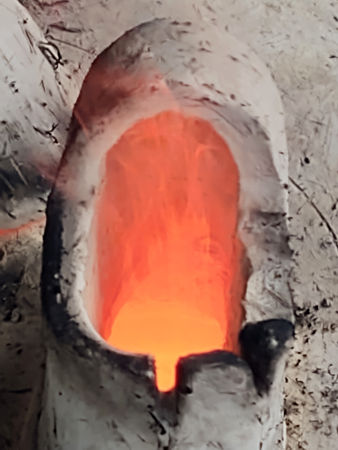
|
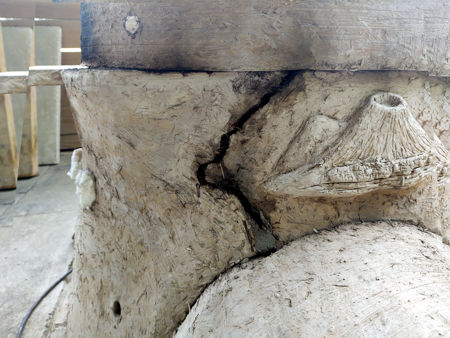
|
|
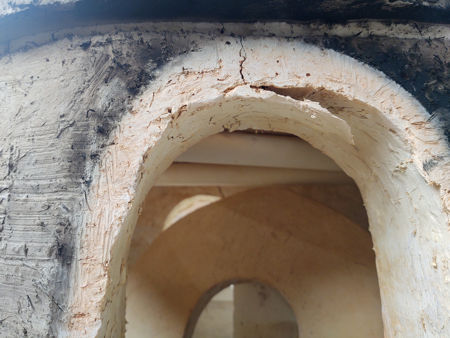
|
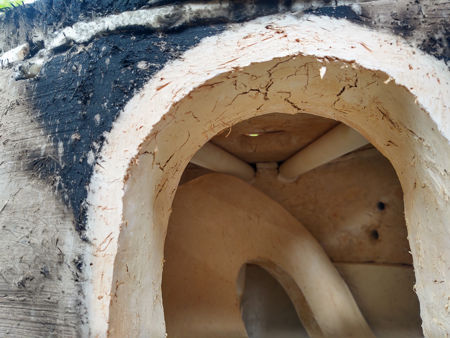
|
|
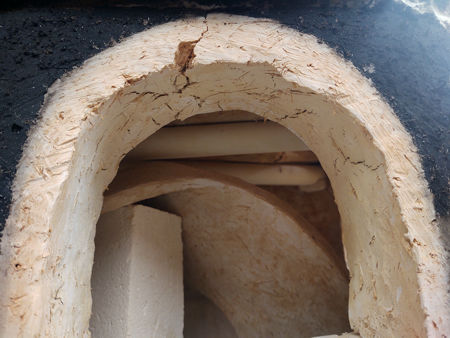
|
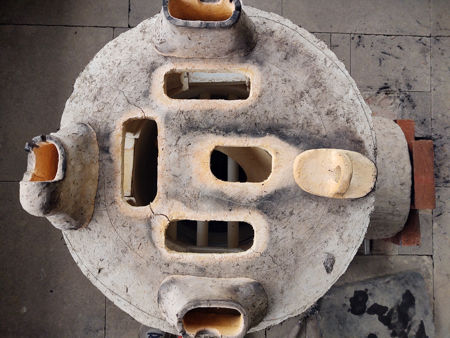
|
|
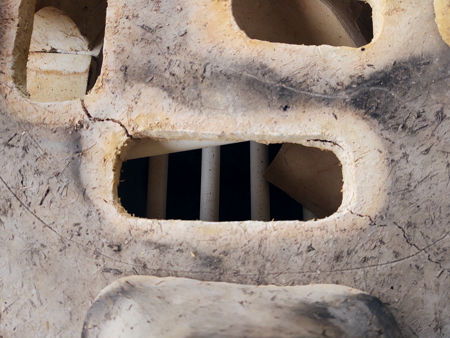
|
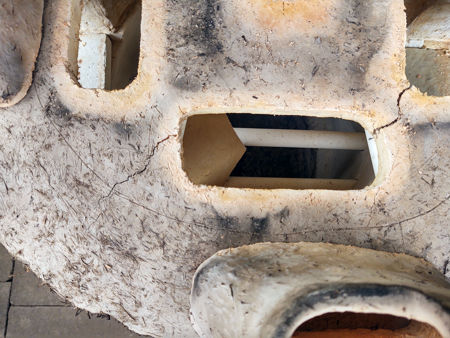
|
|
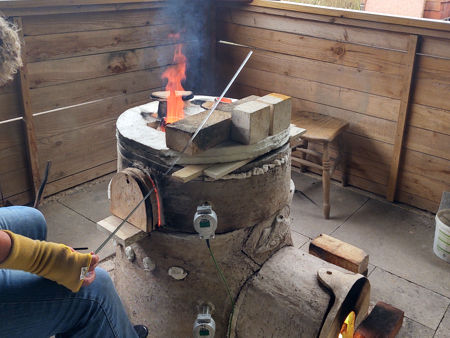
|
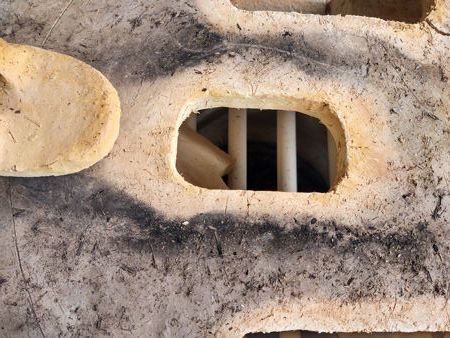
|
|
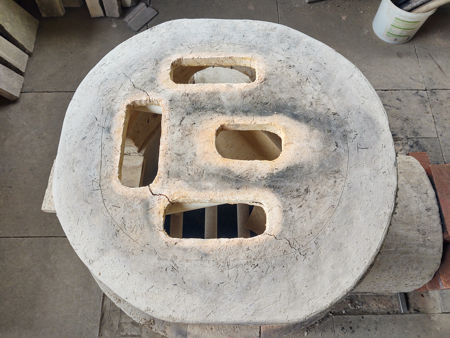
|
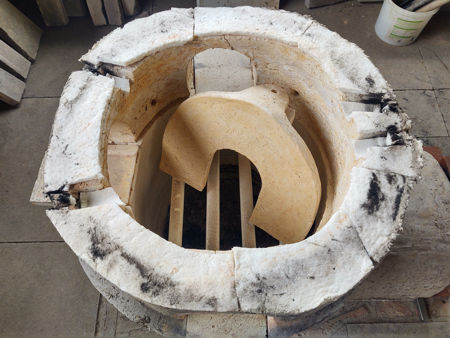
|
|
|
Vesuvius Firing Three
This firing was to test whether we could use Vesuvius as a bead furnace, even though our initial attempts in the previous firing strongly indicated that we would not be able to do so. After Vesuvius Firing Two, we had some repairs on the furnace to carry out, as mentioned above. We also filled the gap between the inner and upper walls before painting with zircon slip. To further insulate the furnace, and to reduce the heat radiation, we applied a two-inch-thick layer of ceramic fibre blanket to the top of the roof, and added a ring of LTI bricks. The firing lasted for just over five hours. We burned 60kg of Opepe, and recorded a top temperature of 1100°C for T1. Although we reached this temparature, we found that we had to overstoke and produce sooty exhaust gases to maintain a reasonably fast temperature rise. Although the furnace temperature was close to 1100°C, as soon as the hot waste gases entered the vulcanettes, they very quickly lost heat, and the temperature within the vulcanettes was not high enough to heat the glass quickly to make beads. We managed to produce a few simple, round reads, but the time it took to make them, together with the uncomfortable amount of heat, convinced us that this furnace would not do for bead-making. To replace it, we built the small bead furnace: Etna. This is recorded on this page. |
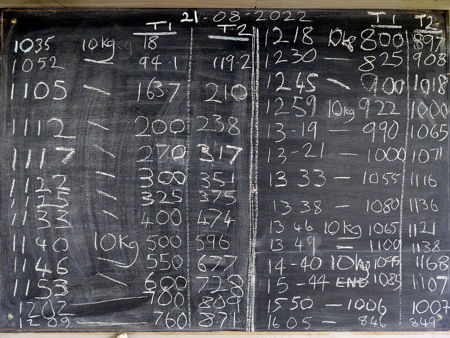
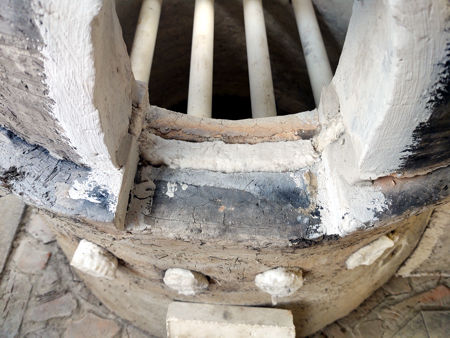
|
|
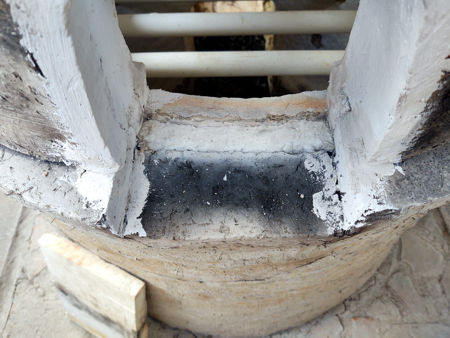
|
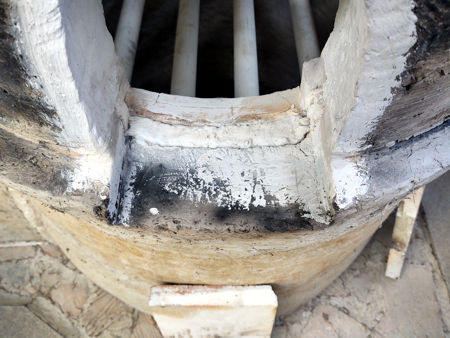
|
|
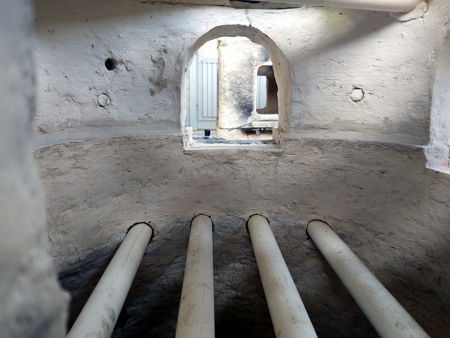
|
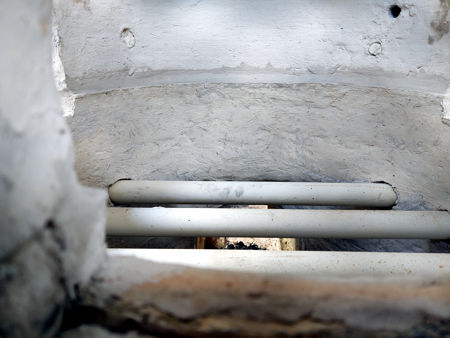
|
|
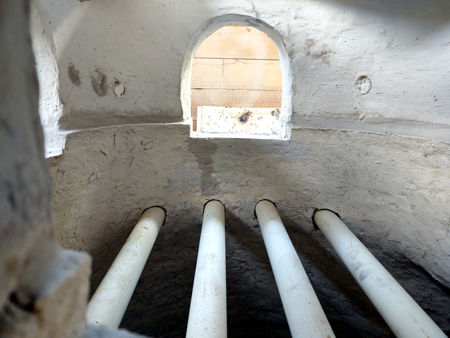
|
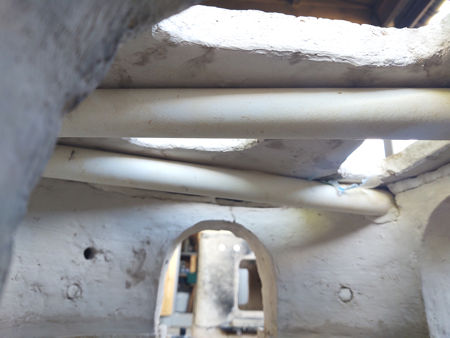
|
|
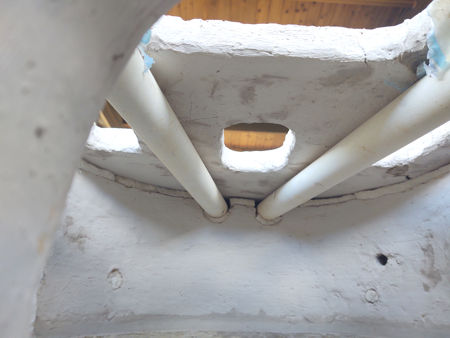
|
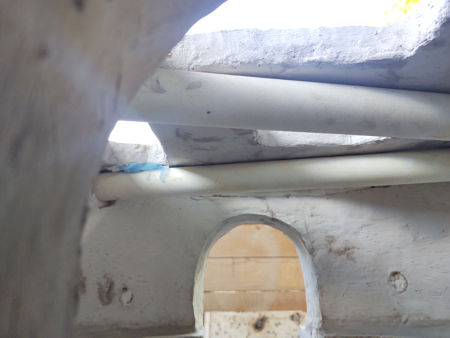
|
|
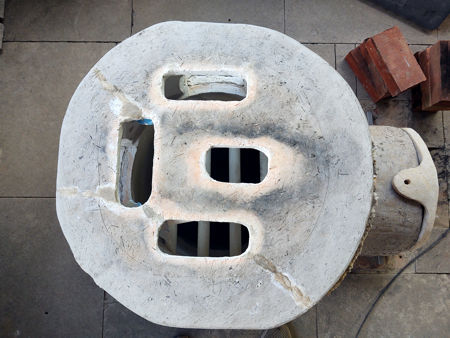
|
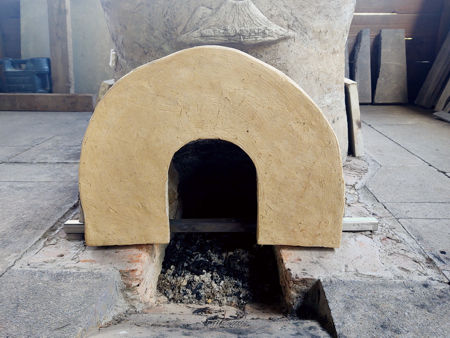
|
|
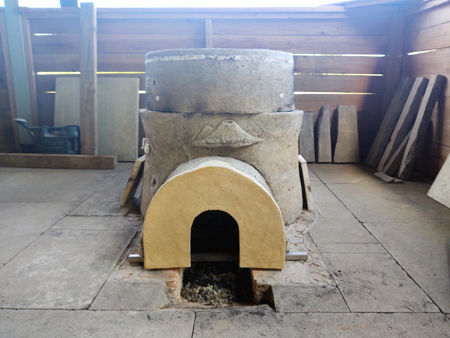
|
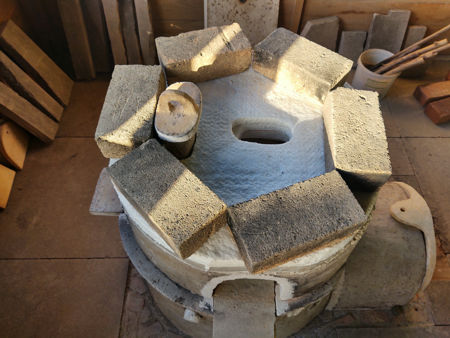
|
|
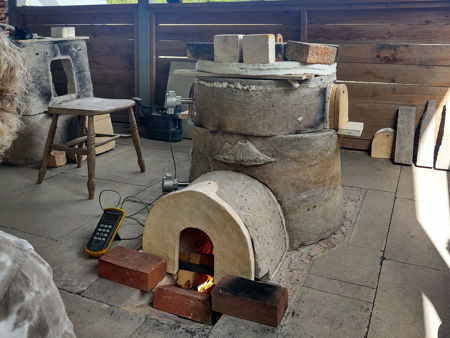
|
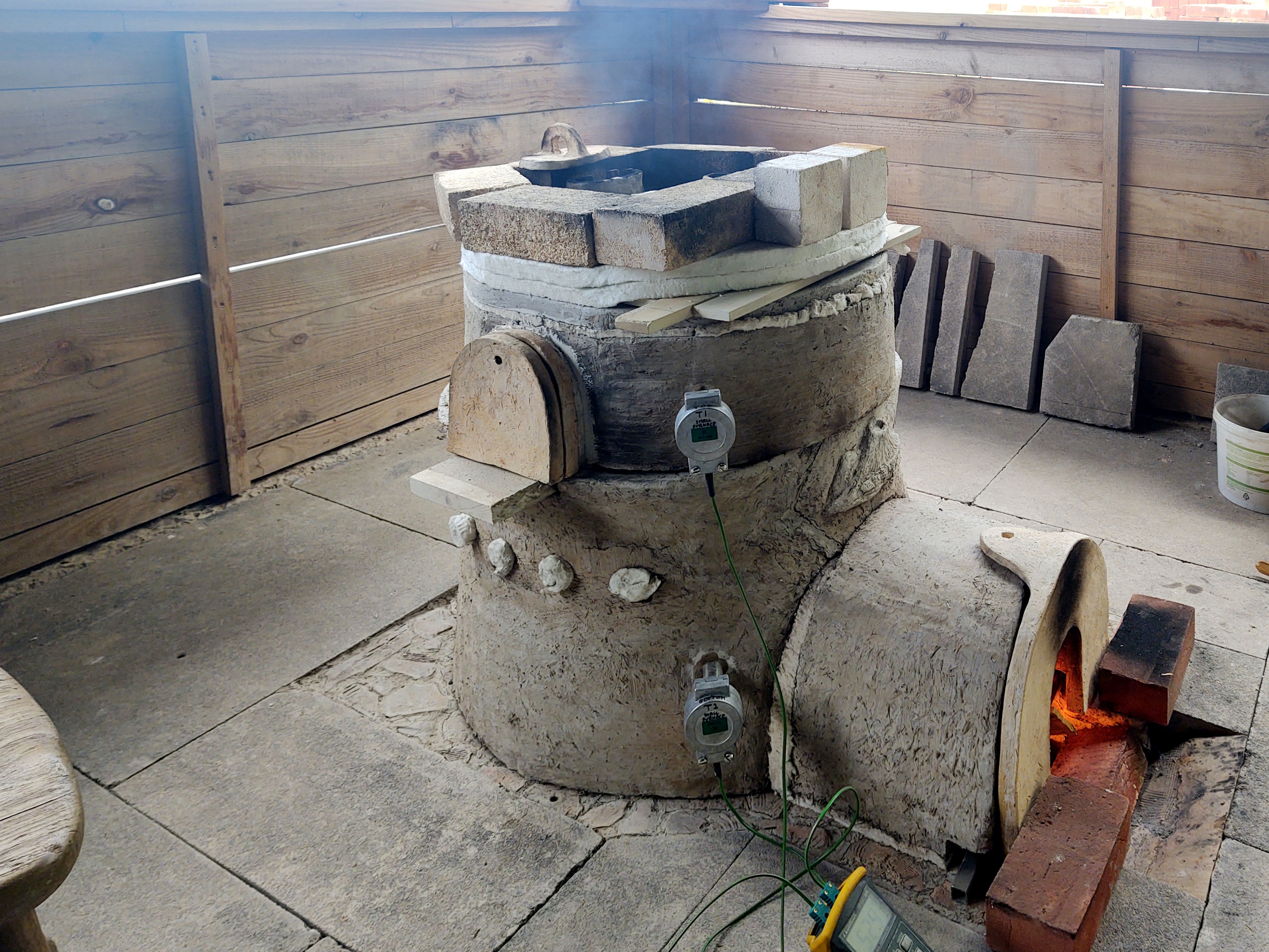
|
|
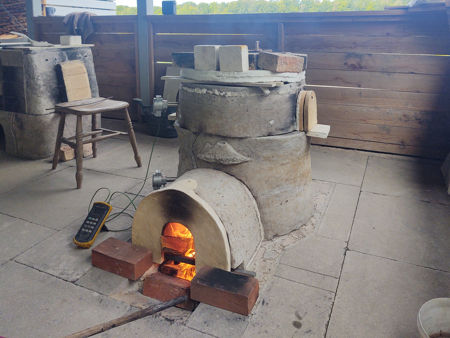
|
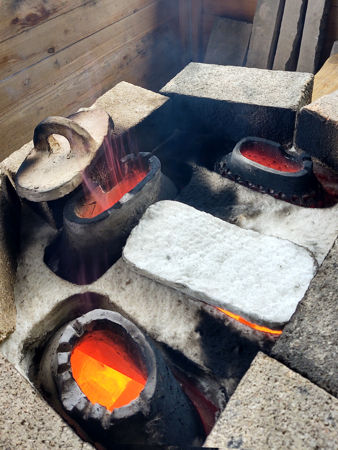
|
|
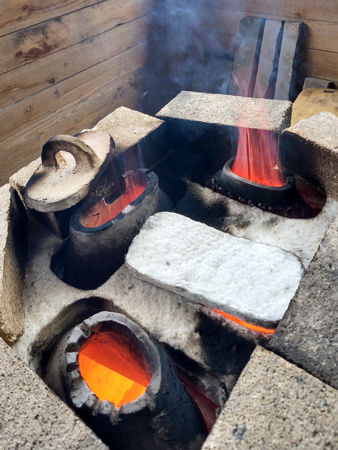
|
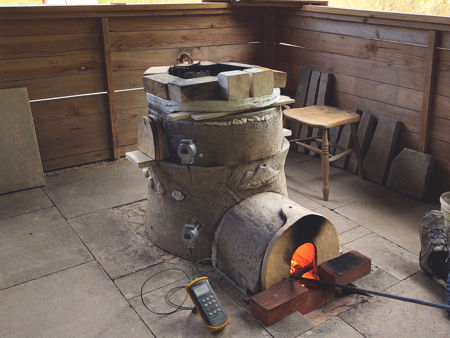
|
|
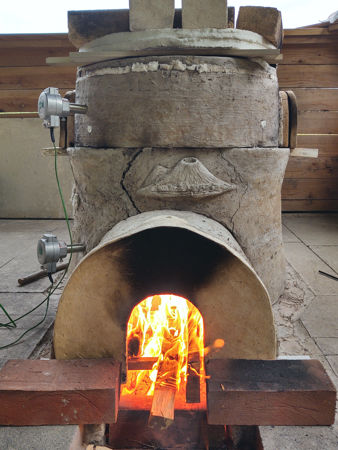
|
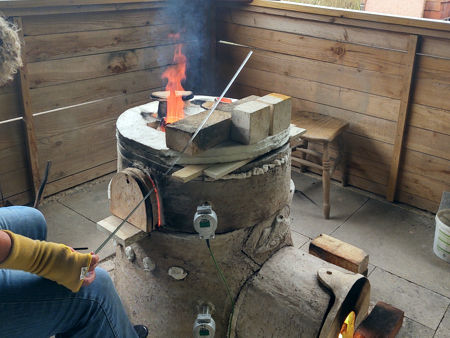
|
|
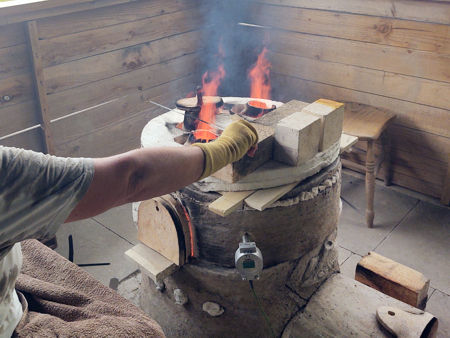
|
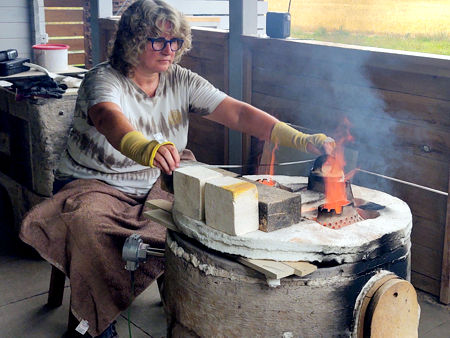
|
|
Vesuvius Firing Four
This firing was for some experimental melts for a friend of ours. The idea was to fire four pots, each with 500gms of glass batch, for six hours. The pots were pre-fired up to 1200°C, and each had a lid. As they were filled with batch and were being taken up from cold, the temperature rise had to be slow. We started at 10.20, and after a false start caused by trying to burn some Oak which was too damp (19% - 20% water content), we switched to a much drier Opepe (10% water content), we reached 1000°C by 14.00. By 15.45, we had reached 1186°C. We decided to stop at this point as the batches had shown little sign of melting. Vesuvius had performed well, but this would be the second to last time it would be fired in this configuration. We have a few alterations planned after one more firing. The batch mixes were later shown to be problematic, and melting them at 1200°C for several hours in a gas-fired furnace did not improve the melts very much. In the end, we re-melted 150gms of the best result at 1350°C for two hours, only to produce a highly viscous glass, which was not what was expected at all! It did help to explain why there was so little evidence of melting of the batches in Vesuvius. |
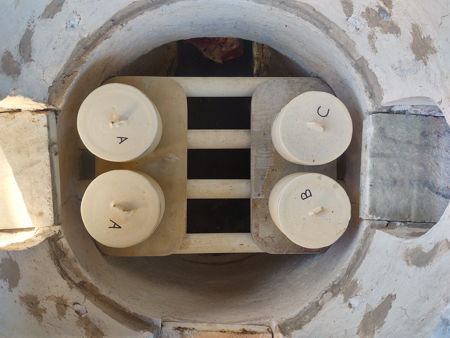
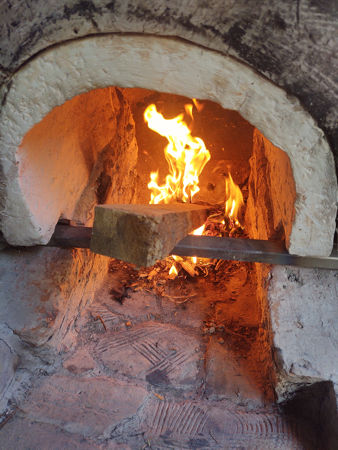
|
|
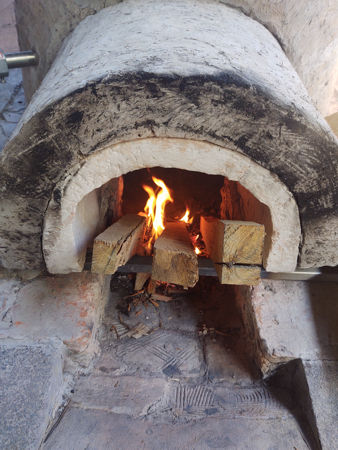
|
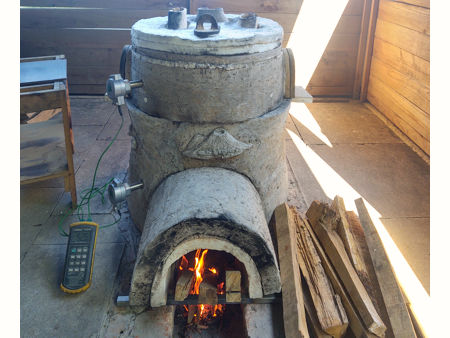
|
|
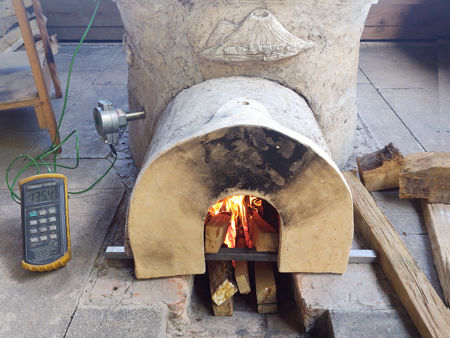
|
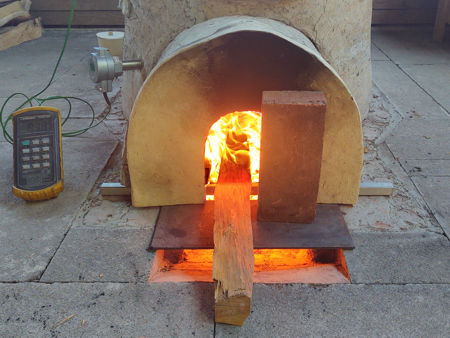
|
|
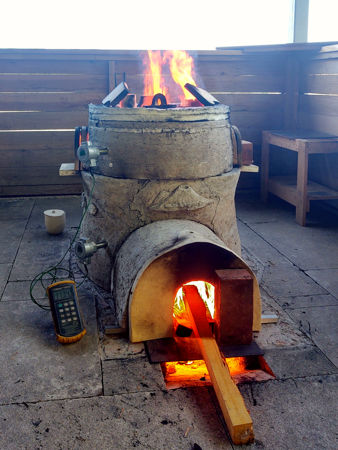
|
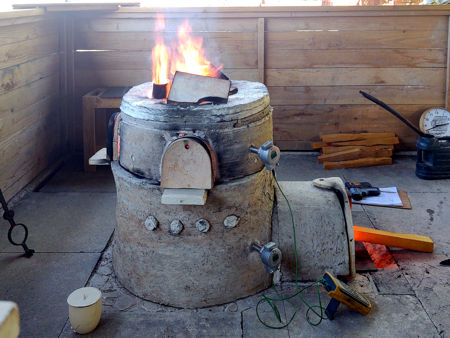
|
Home Gallery Contact Events & Projects Projects: 2019 Onwards Film & TV Archive & Links